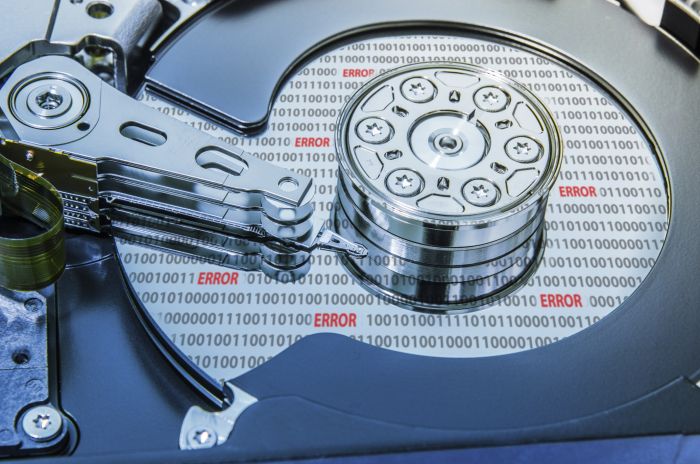One of the most common data retrieval problems that computer users face is the presence of bad sectors on their hard drive.
A bad sector is a specific division of storage space on your hard drive that has become corrupted and no longer allows you to read or write data that section. Having a single bad sector or even a few bad sectors does not normally render your hard drive unusable, but over time, bad sectors tend to multiply and the more of them you have, the more problems you’ll have in accessing data from your drive.
Signs you may have bad sectors on your drive
The presence of bad sectors on your drive can manifest itself in several ways:
Files become mysteriously corrupted.
Your system becomes very slow or freezes up when you try to access your files.
If you have a hard drive activity light, it stays on for long periods of time, even during times where you’re not accessing files.
If you notice any of these signs, the first step is to back up any data that you wish to save. Sector corruption can lead to permanent loss of data, and even a complete system failure, so it pays to be cautious with any mission critical data.
How are bad sectors created?
Bad sectors come in two types and can be created in a few different ways.
Hard bad sectors.
“Hard” bad sectors are caused by physical damage to the disk. They can be created whenever the read/write head comes into contact with the physical surface of the disk. This typically happens if the disk is bumped as data is being written to it, exposure to extreme environmental conditions, or faulty mechanical parts.
Hard bad sectors can’t be repaired, the only option you have is to save your data and replace the disk.
Soft bad sectors.
Soft bad sectors occur when an error correction code on a sector doesn’t match the content of the same sector. This is usually due to some kind of logical error on the disk caused by virus or malware corruption or failing to shut down the operating system properly, rather than a physical problem.
Preventing bad sectors on your hard drive
Prevention is always easier than a cure when it come to data recovery. The best way to avoid bad sector problems is to take good care of your computer. This means:
Make sure your computer is located in a well-ventilated, cool, dry area of your home, away from direct sunlight and ideally in a relatively low-traffic area.
If you’re moving your desktop computer, take care to pack it properly, ideally in the manufacturer’s original packing material.
Be careful when carrying your laptop from one destination to the next. While they’re reasonably sturdy, a significant bump to your computer can damage the hard drive and create bad sectors.
Always shut down your operating system properly when turning of your computer.
Use surge protection with all your power sources.
Make sure the fan that cools your hard drive is working properly and that the air filter is unclogged.
Maintain adequate virus and malware protection.
If you suspect that you have problems with sector corruption, back up your files and replace the disk as soon as possible.
If you experience problems accessing your key files, or if you experience a system failure before you can back up your data, your best bet for recovery is to contact an experienced data recovery specialist. Though it’s not always possible to recover certain files particularly from disks with a lot of physical damage, a data recovery professional has the tools, and knowledge to give you the best chance to retrieve the data you need.
